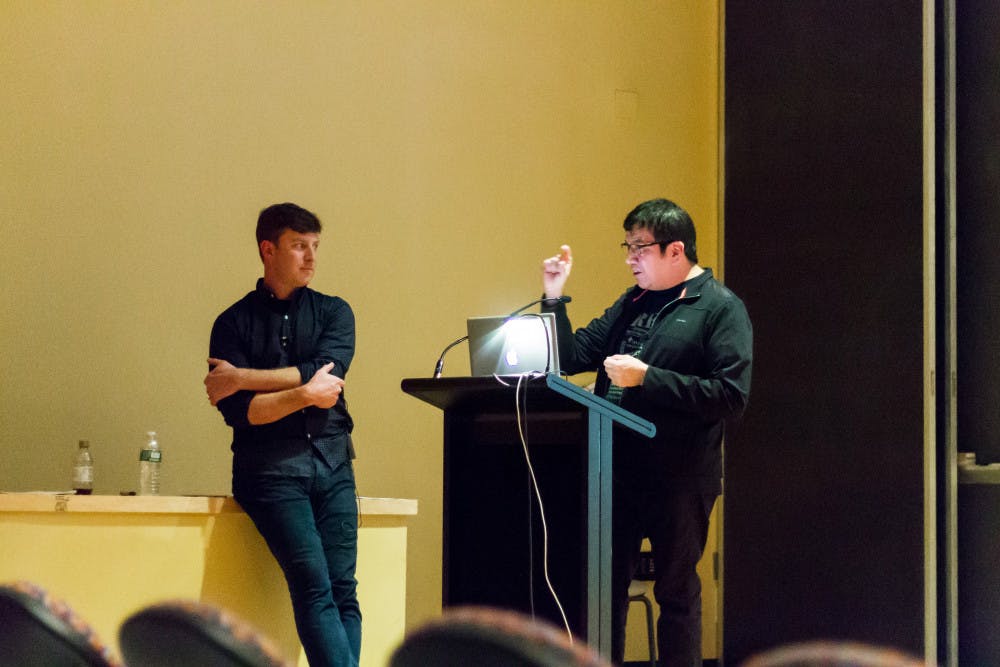The visual arts department hosted a talk Wednesday by Adjunct Instructor in Art Martin Smick and Rhode Island School of Design Professor Duane Slick. The two presented their latest collaborative exhibition, “Finding Metacom,” which was featured in the Fruitlands Museum in Harvard, Mass.
Metacom — also known by his English alias King Philip — was a Wampanoag chief in the 17th century. He succeeded his father Massasoit, who helped the pilgrims survive their first year in Plymouth Colony. Metacom initially lived in harmony with the English settlers but eventually took arms against the increasingly aggressive English authorities.
“Metacom managed to unite the Wampanoags and (neighboring) native tribes,” Smick said. In 1676, Metacom was killed in an ambush in Mount Hope. His body was quartered and hung from four different trees. His head was severed and displayed in Plymouth for 25 years.
Metacom’s legacy in American culture is ambiguous. His memory was appropriated by American revolutionaries in the 18th century as an American symbol of resistance against the British. But Metacom’s goal in his war against the English was to dispel white people from North America, the presenters said.
“Finding Metacom” is the study of Metacom’s legacy and the mark he left on Native American history and mainstream American culture. The exhibition is the synthesis of the artists’ search for Metacom’s path in history. It is the interpretation of what they saw along the way and an homage to Metacom’s legacy as a historical figure.
Smick and Slick wanted to “connect the story of Metacom to the present,” rather than just let it be admired as a legend relegated to the past, Smick said.
The exhibition is composed of several different types of work including paintings, pictures and books. The exhibit centers on Metacom’s war club — the only artifact in the exhibit belonging to Metacom himself — said Leigh Tarentino, associate professor of visual art. The war club is a wooden artifact that dates back to the 17th century. It is shaped like a peace pipe, but its legacy as a weapon is anything but peaceful.
The exhibit’s art makes many references to the war club and Metacom’s life. There is a still video of the place where Metacom’s seat used to stand and where he used to hold his council, which now stands on property owned by Brown, Smick said. The video also includes a clip of a sunrise on Mount Hope Aug. 13 — 340 years after Metacom’s death.
Many of the paintings bear quotes such as “This is not a peace pipe,” “His war is in the water / It is in the light” and “Metacom was here / You are here.” The paintings’ backgrounds include a variety of colors and shapes that are meant to give the viewer a sense of endurance — a sense that Metacom’s story lives on today.
“We didn’t want to be overly explicit but rather let the work spark an interest in the story,” Smick said.





